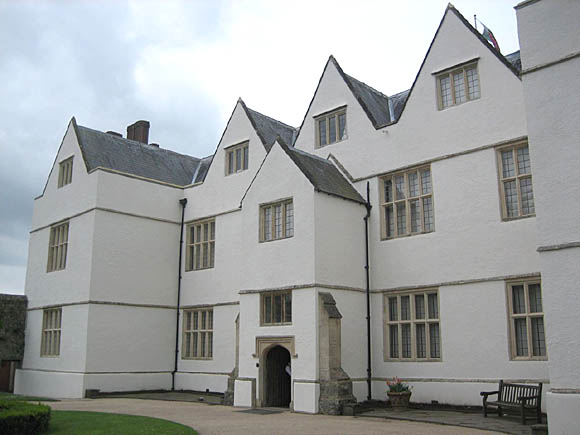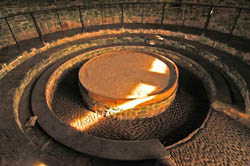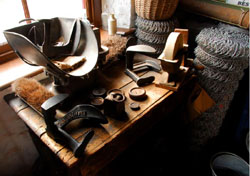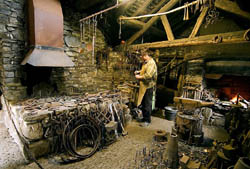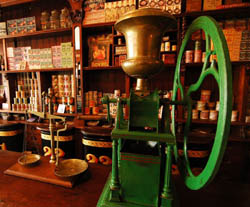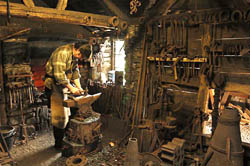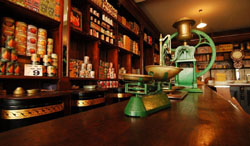The St Fagans National History Museum (Welsh: Amgueddfa Werin Cymru), commonly referred to as St Fagans, is an open-air museum chronicling the lifestyle, culture and architecture of the Welsh people.
Located in the grounds of St Fagans Castle near Cardiff, the museum is part of National Museum Wales, formerly the National Museums and Galleries of Wales. It is also one of the most popular tourist attractions in south Wales. The museum was started in 1946 following the donation of the castle and lands by the Earl of Plymouth. It opened its doors to the public in 1948, under the name of the Welsh Folk Museum. The museum's name in Welsh (also meaning "Welsh Folk Museum") has remained unchanged since that date, whereas the English title has been modified once to Museum of Welsh Life, and again to its current nomenclature.
The brainchild of Iorwerth Peate, the museum was modeled on Skansen, the outdoor museum of vernacular Swedish architecture in Stockholm. Most structures re-erected in Skansen were built of wood and are thus easily taken apart and reassembled, but a comparable museum in Wales was naturally going to be more ambitious as much of the vernacular buildings in the country are built of masonry.
The museum includes over forty buildings which represent the architecture of Wales, including a Celtic village, a nonconformist chapel (in this case, Unitarian), a school house, a tollbooth, a cockpit and even a cow shed. Apart from the Elizabethan manor house of the castle and the Celtic village and 'House of the Future' (a Millennium project), which were built from scratch, all the buildings have been transported from various locations around Wales and painstakingly reconstructed on the site.
With the reconstruction of the medieval church of Saint Teilo formerly at Llandeilo Tal-y-Bont in western Glamorgan (restored to its pre-Reformation state), all that is missing from the Museum as Peate envisaged it is a pub. Though the museum was intended to preserve some of Welsh rural life, it now includes several buildings that depict the industrial working life that succeeded it, itself almost extinct in Wales. There is a row of workmen's cottages from Rhyd-y-car, near Merthyr Tydfil, as well as the pristine Oakdale Workmen's Institute. A post-war prefabricated bungalow has even been erected on the grounds.
Especially on weekends, the museum holds displays of traditional crafts with a working blacksmith's forge and a cooper. Other buildings are staffed by people in period costume. All staff are required to speak Welsh. Part of the site includes a small working farm which concentrates on preserving local native breeds of livestock. Much of the produce from the museum is available for sale.
 Photographs by Peter W. Photographs by Peter W.
Click on an image for a larger view | 
